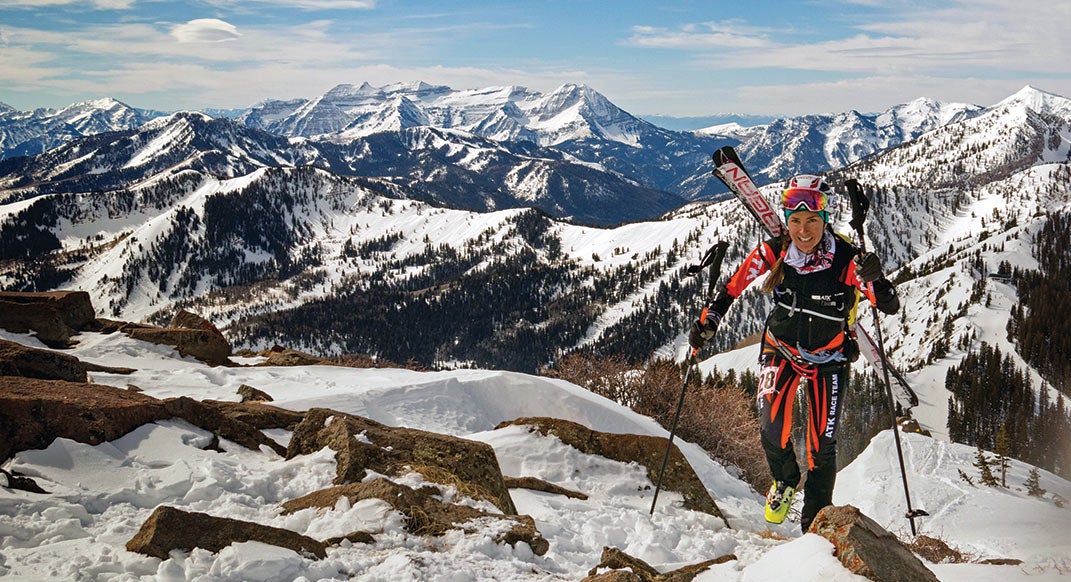Cross Training Twists

The Twin Mountain Trudge
January 16, 2016
journeymanadv.com/events/trudge-do-you-dare
Located in the Medicine Bow Mountains near Laramie, Wyoming, this January race—with two distances, an 11-mile, single-loop “classic” and 22-mile double-loop “marathon”—pits runners against thigh-deep snow, icy terrain and 2,000 feet of climbing per loop. Traction devices are allowed, but flotation devices—such as skis or snowshoes—are not. Course markings are often buried. There is one aid station in the 11-miler: an unmanned bottle of whiskey wedged in the snow.
Located in the Medicine Bow Mountains near Laramie, Wyoming, this January race—with two distances, an 11-mile, single-loop “classic” and 22-mile double-loop “marathon”—pits runners against thigh-deep snow, icy terrain and 2,000 feet of climbing per loop. Traction devices are allowed, but flotation devices—such as skis or snowshoes—are not. Course markings are often buried. There is one aid station in the 11-miler: an unmanned bottle of whiskey wedged in the snow.
“This is a great, low-key running challenge with top-notch organization and a sort of underground, mini winter version of Barkley,” says Trail Runner’s Jeremy Duncan, who ran the 22-miler in February. (The Barkley Marathons is a notoriously tough and quirky Tennessee 100-miler; see Issue 103, April 2015, “Out There.”) “And yes, it is as hard as advertised. It’s just good, old-fashioned suffering.”
Since there is no way to exit the loop until the finish, runners are required to carry emergency gear—fire starters, space blankets, 40 ounces of water and plenty of food. Runners typically take six to seven hours to finish the 22-mile course, though many tap out after one lap. (The 2016 race filled up as this issue went to press; email the race director to find out when registration for 2017 opens.)
Wasatch Powder Keg Ski Mountaineering Series
March 4 – 6, 2016
Set in Utah’s Brighton Ski Area in the dense and rugged Big Cottonwood Canyon, the Wasatch Powder Keg is a three-day festival of ski-mo races, music, food, gear demos and clinics.
To keep the races—which include individual and team events—accessible to all, there are three divisions: Recreational (a shorter course for beginners), Heavy Metal (for those who want to ski the entire course but don’t have lightweight racing gear) and Elite (the entire course in lightweight racing gear). Regardless of division, racers struggle through steep powder, dodge thigh-deep moguls and are required to carry emergency avalanche gear.
Participants start at 8,755 feet and skin to the top of 10,452-foot Mount Millicent before skiing back down and repeating that loop multiple times; the Elites complete six climbs. At the finish, music, drinks and good food await, with all proceeds benefitting the Utah Avalanche Center.
Braveheart Snowshoe Series
December 2015 – March 2016
cutemoose.net/snowshoe_series.htm
Outdoor enthusiasts seeking a little more quirk will feel right at home at the Braveheart Snowshoe Series. With over 30 events across Minnesota and Wisconsin, Braveheart typically offers 5K to half-marathon distances over rolling, snow-covered meadows, forested trails and frigid lakes. Depending on conditions, entrants might have to muscle through deep snowdrifts or slip around on icy dirt.
Braveheart doesn’t take itself too seriously. Jim McDonell, the series founder, competes in most of his events wearing a traditional Scottish kilt and blue-and-white face paint. Although elite snowshoers show up every year, the community welcomes entrants of all levels.
At every event, racers can choose one of four divisions: Mountaineering (with a heavy pack and larger snowshoes), Classic (wood-frame snowshoes only), Athena/Clydesdale (females must be at least 150 pounds and males 200 pounds to enter) and Kilter’s Class (for any race participants who wear kilts). Every finisher receives a plaque carved by McDonell himself, often from wood he finds on his own property.
“It’s the toughest, most primal sport there is, and it’s my passion in life,” McDonell told the Minneapolis StarTribune. “I used to snowshoe to stay in shape for running. Now I run to stay in shape for snowshoeing.”
New England Winter Wild
January and February 2016
The premise of the New England Winter Wild uphilling series is simple: whatever you use to get up the hill, you have to use to get down.
Winter Wild events, which take place at ski resorts in New Hampshire’s White Mountains, feature three-to-four-mile loops, to the top of a peak and back down. Entrants clamber up the mountain by whatever means possible—running shoes with MICROspikes, skis, snowshoes—and reach the summit just as a stunning New England sunrise glides across snow-capped ridges.
The series is known for its low-key, backwoods feel and friendly vibe. Participants at its pre-dawn starting line run the gamut from competitive athletes to families with kids, who show up thanks to an anti-obesity initiative that awards a cash prize to the school district that fields the most entrants.
Don’t forget to pack plenty of layers—even when you’re working up a sweat, New England winters are cold, icy and windy. Plus, you’ll want to stay warm for the post-race festivities and raffle.
>Know Your Winter Disciplines
Ski Mountaineering: These races involve skiing up and down mountains, both at ski areas and in the backcountry. On uphills, racers affix “skins”—strips of synthetic fabric or mohair—to the bottoms of their skis for traction.
Snowshoeing: Participants wear lightweight snowshoes to distribute their weight over a larger area, so they don’t sink into the snow and flounder as they would in running shoes.
Uphilling: Entrants use running shoes with traction devices, snowshoes or skis to ascend a ski slope; in some events, they then slide, romp or run back down in the same manner.
This article originally appeared in our December 2015 issue.